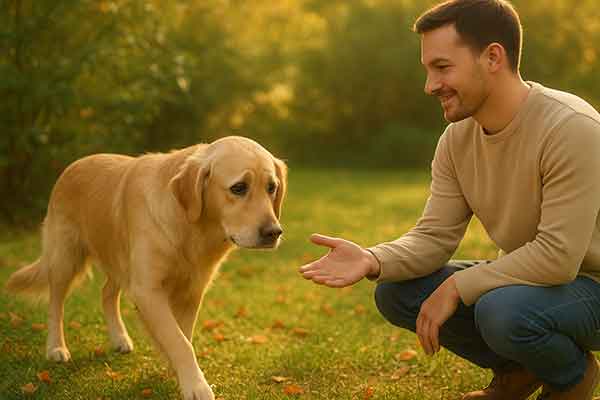Can Abused Dogs Be Trained? How to Help Traumatized Dogs Heal and Learn
Rescuing an abused dog is an act of compassion, but it often comes with a set of unique challenges. Many new pet parents ask, can abused dogs be trained? The answer is yes—absolutely—but it requires a deep understanding of canine trauma, trust-building, and specialized training techniques. In this guide, we’ll explore how abused dogs can be rehabilitated, what to expect during the process, and how you can help them rediscover a life of safety and happiness.
Table of Contents
- Understanding the Mind of an Abused Dog
- Can Abused Dogs Be Trained?
- Challenges in Training Abused Dogs
- Steps to Train an Abused Dog
- Why Positive Reinforcement Is Key
- Behavioral Red Flags to Watch For
- When to Seek Professional Help
- Success Stories: Dogs Who Overcame Abuse
- FAQ
Understanding the Mind of an Abused Dog
Dogs that have been physically, emotionally, or psychologically abused often suffer from deep-rooted fear and mistrust. These dogs may have been beaten, neglected, chained, yelled at, or denied basic care. Over time, trauma can manifest in the form of:
- Fear-based aggression
- Extreme submission (cowering, hiding, trembling)
- Separation anxiety or attachment issues
- Lack of socialization
- House training setbacks
Understanding where the dog is coming from emotionally is the first step toward helping them heal and eventually accept training.
Can Abused Dogs Be Trained?
Yes, abused dogs can be trained—and in many cases, they can become loving, obedient companions. However, the process is typically slower and more delicate than training a dog without trauma. The key is building trust first and progressing at a pace that respects the dog’s emotional boundaries.

Challenges in Training Abused Dogs
Training an abused dog isn’t about teaching “sit” or “stay” right away. The initial challenge lies in helping them feel safe and secure. Some common challenges include:
- Lack of Trust: Fear of humans can cause a dog to shut down or act defensively.
- Overreaction to Stimuli: Sudden sounds or gestures can trigger past trauma.
- Fear of Leashes or Hands: These may be associated with previous abuse.
- Inconsistent Progress: Healing is not linear—there may be setbacks.
Steps to Train an Abused Dog
Here is a gradual and humane approach to training an abused dog:
1. Create a Safe Space
Designate a quiet, comfortable area where your dog can retreat without being disturbed. Safety is the foundation of trust.
2. Establish a Routine
Consistency in feeding, walking, and bedtime helps abused dogs feel more secure and builds predictability into their lives.
3. Go Slow and Steady
Allow your dog to approach you first. Avoid overwhelming them with attention. Let trust build naturally.
4. Use Gentle Body Language
Avoid direct eye contact, raised hands, or sudden movements. Sit at their level and speak softly.
5. Reward Calm Behavior
Use treats and praise to encourage positive responses to stimuli, new people, or commands.
6. Introduce Basic Commands
Once trust is established, begin with simple commands like “sit,” “come,” and “stay” using rewards-based training.
7. Practice Patience
Celebrate small wins. A shy dog making eye contact, taking food from your hand, or walking on a leash is a big deal.
Why Positive Reinforcement Is Key
Never use punishment-based methods with an abused dog. Yelling, leash corrections, or forceful training only reinforce fear and delay healing. Instead, use:
- Treats
- Verbal praise
- Clicker training
- Affection (when welcomed)
Positive reinforcement builds confidence and helps the dog associate training with safety and rewards.
Behavioral Red Flags to Watch For
Monitor for signs that your dog may be struggling emotionally:
- Excessive hiding or withdrawal
- Growling or snapping when touched
- House soiling even after training
- Repetitive behaviors (pacing, licking, chewing)
These may indicate stress, pain, or unresolved trauma that needs further intervention.
When to Seek Professional Help
If your dog is not progressing or exhibits severe anxiety or aggression, consult a certified dog behaviorist or positive reinforcement trainer. These professionals specialize in trauma recovery and can tailor a plan specific to your dog’s needs.
Success Stories: Dogs Who Overcame Abuse
There are countless stories of abused dogs who became service animals, therapy dogs, or simply beloved family pets. These transformations didn’t happen overnight—but with love, time, and patience, abused dogs can truly thrive again.
FAQ
Can an abused dog ever fully trust humans again?
Yes, many abused dogs learn to trust again, though some may always be cautious in new situations. Trust is built over time through consistency, kindness, and respect.
How long does it take to train an abused dog?
Every dog is different. Some may respond positively in weeks, while others take months or longer. Patience and steady progress are key.
Should I adopt an abused dog if I’ve never had a dog before?
First-time dog owners can adopt an abused dog, but should be prepared for a learning curve. Consulting a trainer or foster support group is strongly advised.
Is crate training appropriate for abused dogs?
Crates can offer security if introduced gently, but they should never be used as punishment. Make sure the crate is a positive, voluntary space.
Can I train an abused dog without professional help?
Yes, many people have successfully trained abused dogs on their own. However, if you encounter behavioral issues or feel overwhelmed, professional help is recommended.
Conclusion
So, can abused dogs be trained? Absolutely. While the path may be longer and filled with emotional hurdles, training an abused dog is not only possible—it’s deeply rewarding. With trust, patience, positive reinforcement, and the right support, even the most fearful and broken dogs can learn to love, obey, and live happily again.
If you’re considering adopting or working with an abused dog, know that your compassion and consistency could change a life—for both of you.




